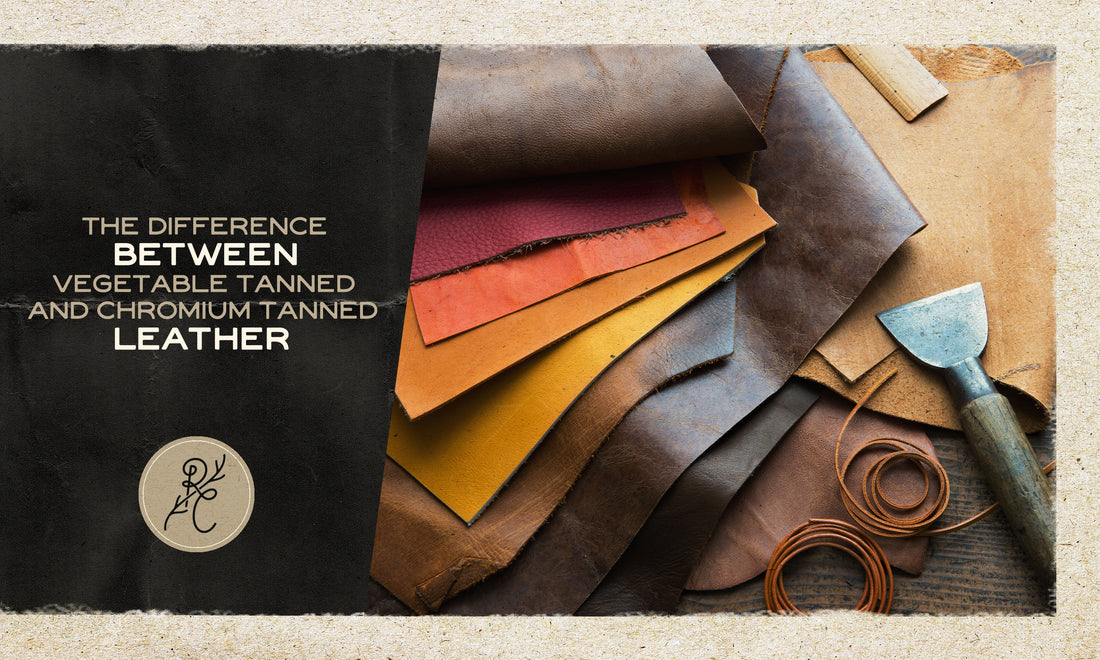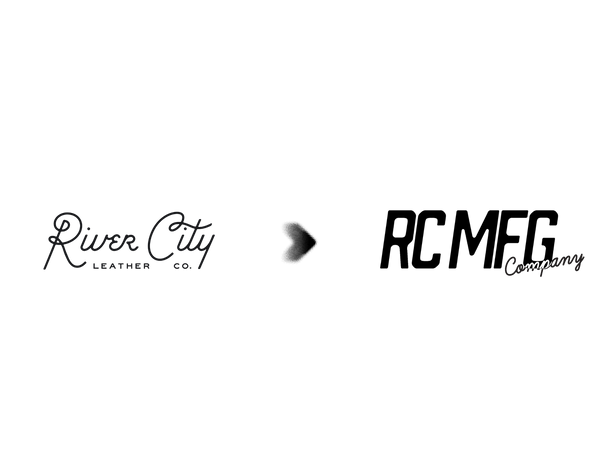
The Difference Between Vegetable Tanned and Chromium Tanned Leather
Share
Do you love the look, feel, and smell of leather goods? It is a much longer process from hide to handbag than you might think. All hides must be processed and tanned before they can be turned over to leather craftsmen. In fact, if the process doesn’t start right away the pelt will rot and putrefy quickly and be discarded.
There are three different methods of tanning, each named for the agents used in the tanning process. There are advantages and disadvantages to each, but vegetable tanned leather will always last longer with proper care, even with daily rugged use. The other two tanning methods use chromium or a combination of the two.

Here’s a closer look at how each of these tanning processes work and their results. But first, how is leather tanned?
How the tanning process works
The process for tanning hides is very similar for both vegetable and chromium tanning. The process starts by soaking the hide in salt to cure it and stop decay. From there, the hide is soaked in various solutions, either organic or chromium, to further cure the leather.
Although the core tanning process is the same regardless of the agents used, chromium tanning is so much faster that it allows hides to go from pelt to workable leather in just a day. What agents are used in the tanning process also dictate the color, suppleness, and texture of the leather.

Vegetable tanned leather
Leather that is vegetable tanned uses pieces of trees and plants to cure the leather. This is the origin of leather tanning, and many argue it is still the best method. The most common plants used today have been passed down through millennia.
Advantages of vegetable tanned leathers
Vegetable tanned leathers are preferred by much of the fashion industry. Their suppleness, body, and thickness help handbags and other leather goods hold their shape for decades. While vegetable tanned leather cannot be left to humid or damp environments long-term without decay, daily use and proper cleaning and care will make them last a long time.
Because the process of tanning includes all organic materials, these leathers are also much more eco-friendly and biodegradable. The vegetable tanning process doesn’t leave a negative impact on the environment because it still follows the basic principles used throughout time.

Disadvantages of vegetable tanned leathers
Vegetable tanning requires a lot of water, which can be a strain on resources. However, the organic nature of the agents used in veg tanning means that the discarded water is not harmful to the environment. Because vegetable tanned leathers are organic, they can deteriorate over time if left to decay. It is always better to use your vegetable tanned leather handbags and accessories on a daily basis, as daily use actually lengthens the lifespan of most leathers.
What happens to vegetable tanned leathers over time?
If you leave a vegetable tanned leather handbag in a corner of the closet in a humid room, it’s going to decay rather quickly. However, using these items daily over time can strengthen the leather and give it a beautiful patina. With proper care, vegetable tanned leather goods can last decades, with favorite bags, jackets, and accessories passed down from one generation to the next.

Chromium tanned leather
Chromium tanned leather makes use of chrome to cure the leather. The biggest difference between this process and veg tanning is that chromium tanning takes as little as a day, while vegetable tanning takes up to 2 months. Chromium is a mineral that, while found naturally in the environment, leaves a significant impact during tanning and leather goods production.
Advantages of chromium tanned leather
The chrome tanning process is so much faster than vegetable tanning that leathers can be produced faster and more inexpensively. However, there is a wide range of chrome tanned leather goods across quality levels, and about 80-90% of the world’s leather is now tanned with chromium.
It is the chromium tanning process that has led to the average person being able to afford stylish leather goods. Chromium tanned leather is waterproof and lightweight, perfect for everyday handbags and accessories. It doesn’t deteriorate in damp environments, and is a good choice for leather goods that may be exposed to water or moisture.
Disadvantages of chromium tanned leather
Unfortunately, like other cheap manufacturing processes, chromium tanning puts a strain on the environment. While regulated heavily, the pollution resulting from chromium tanning is still leaving a negative impact on the world around us. While chromium tanned leather seems more durable on the surface, these leather goods will eventually decay and do not last as long as vegetable tanned hides.
What happens to chromium tanned leathers over time?
Unlike vegetable tanned leathers that can continue to cure and grow beautiful with each passing day, chromium tanned leathers begin their decline from the first day it leaves the manufacturing plant. Chromium leather is not as durable, and it falls apart easily with rugged daily use. However, chromium leather goods are ideal for many everyday things like belts and handbags.
Combination tanning methods
It stands to reason that some tanners want the best of both worlds. What if you could have a leather that was lighter weight and more water resistant without sacrificing the overall durability and shape of the leather goods? Thus combination tanning methods was born. Some tanners use a combination of chromium and vegetable agents to cure and work the hides for a more unique leather that has the best of both worlds and few of the downsides.

How to tell if your leather is chromium or vegetable tanned
If you’re curious about whether the leather item in your hand was cured with chromium or vegetable tanning processes, there are some easy ways to know.
- Take a small strip of the leather and place it in boiling water. Vegetable tanned leather will curl up almost immediately, while the chromium tanned leather will float at the top.
- Try to burn a small piece of the leather. Vegetable tanned leather does not burn as easily as chromium tanned leather, and the ashes will be a natural white or gray. Chrome tanned leather will burn more easily and leave an odd green ash behind.
Although most of the world’s leather is now chrome tanned, the finest leather goods are still made with vegetable tanned leather. Other tanning methods crop up from time to time, but if you want the best in fashion, your items will probably be made with one of these two processes.
